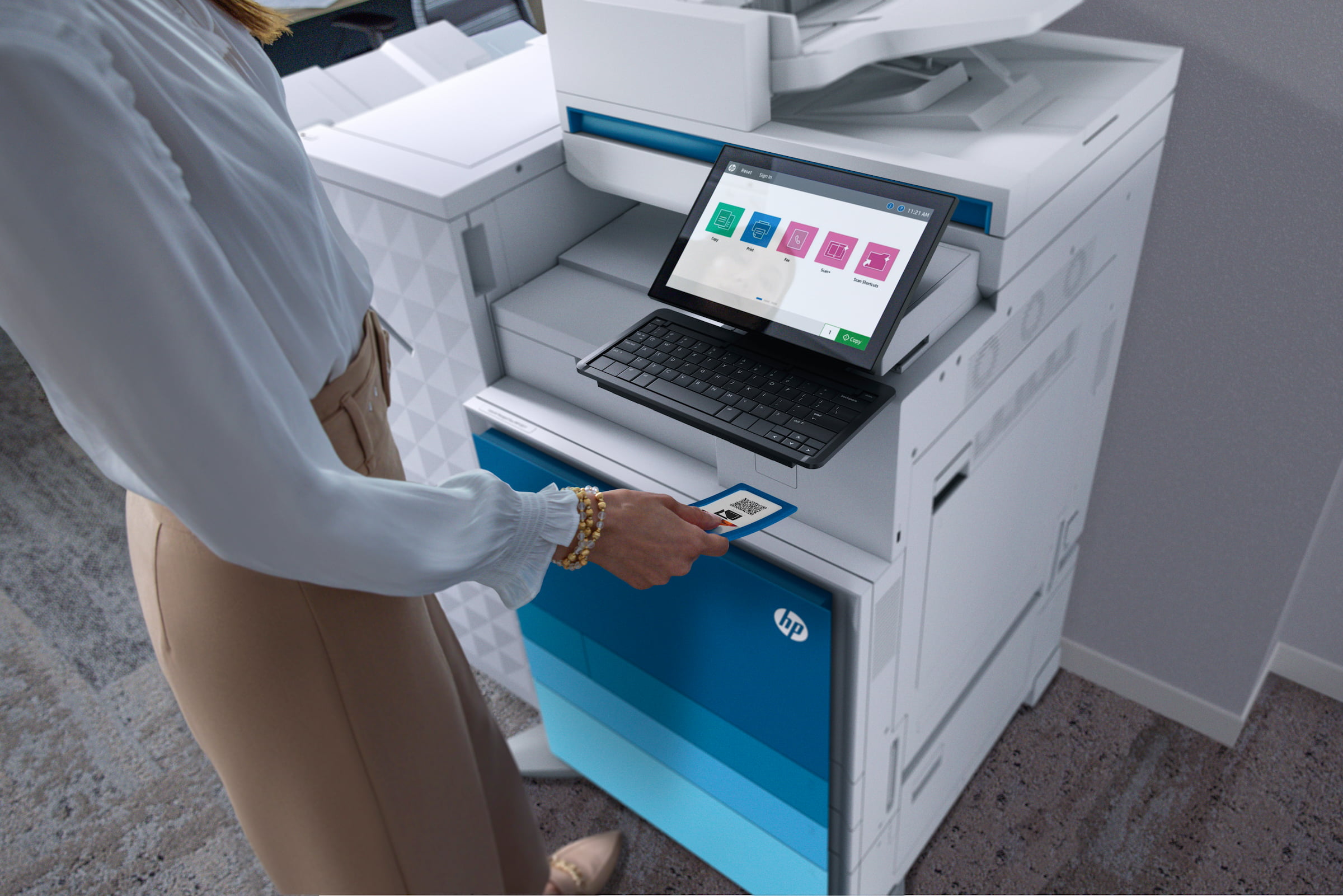Once happy to cherry-pick individual services under the ‘managed print’ or ‘managed IT’ banner, while tackling the rest themselves, clients are now demanding optimised end-to-end workplace solutions that encompass print, document, and IT services – all in a single point of delivery.
This demand reflects the working patterns and preferences of a newly agile workforce, who require the flexibility to seamlessly operate both in the office and at home. With anywhere, anytime access now a must-have for organisations, the demand for hybrid-enabling technologies has surged – along with calls for managed services providers to offer an ever more expansive portfolio of tech solutions and cloud services to fuel business growth.
The stage is now set for suppliers to fully unburden their clients and take charge of an interconnected ecosystem of services.
“What else can you do?”
For the managed services industry, the pandemic accelerated an inevitable shift from a product-centric to a services-led model. This transition was originally driven by the suppliers themselves, who were advocating digital transformation in workplaces long before Covid. However, as offices closed and print fleets gathered dust over successive lockdowns, customers also realised that they needed much more than hardware and consumables to successfully navigate the new world of work.
Businesses began asking questions of their suppliers: if you can do a little – by providing laptops and printers – why can’t you do a lot and offer a much broader spectrum of services, so that we can focus on our core objectives?
Today, with hybrid working here to stay, market demands on managed service providers are even greater. Employees transitioning from conventional to flexible work environments now expect a seamless digital experience that enables them to work with the same level of agility, no matter where they are based. Businesses are looking towards suppliers to ensure more efficient technology and digital processes – and are quickly realising the benefits of a one-stop-shop.
Everything-as-a-service
After the disruption and uncertainty of Covid, the assurance of an optimised and fully managed end-to-end service is more appealing than ever. This is especially true for businesses trying to regain control of the scattered array of assets they have accumulated through the pandemic. With each employee taking approximately £700-£1700 worth of office technology home at the beginning of the first lockdown, much of this equipment now permanently resides away from the physical workplace, representing both a GDPR risk and a labour-intensive management regime.
Businesses are now seizing the opportunity to re-evaluate their ways of working. Rather than relying on multiple suppliers and vendors, which all too often results in crossed wires and duplicated costs, they want to smooth out their expenditure and have recourse to a harmonised, all-in-one solution. With a consolidated contract and a single service provider, organisations can leverage an economy of scale whilst gaining the flexibility to deliver unified reports across the board.
The more agile managed services providers pre-empted this shift in demand and diversified their operating model to recapture their relevance with customers. As the hybrid workforce adapts to a whole new set of challenges, the time is ripe for providers to offer an all-encompassing ecosystem of cloud-based managed workplace services (MWS).
Cloud-first, cloud now
Data hungry by nature, print services have traditionally been slow to move to the cloud. But the changing demands of a newly hybrid workforce has accelerated a dynamic shift towards cloud-based services. And with 85% of organisations set to be cloud-first by 2025, the message to managed service providers is clear: be cloud-first, or be left behind.
However, if businesses really want it all, they need a strong provider to manage their complex infrastructure. With an all-in-one cloud print service, organisations can smoothly convert and control their print and document processes via a single web-based interface, allowing dispersed workforces to print to any device from any location. Therefore, a cloud-first managed service provider can effectively remove the burden of looking after the underlying infrastructure, enabling organisations to concentrate on their own core business.













































